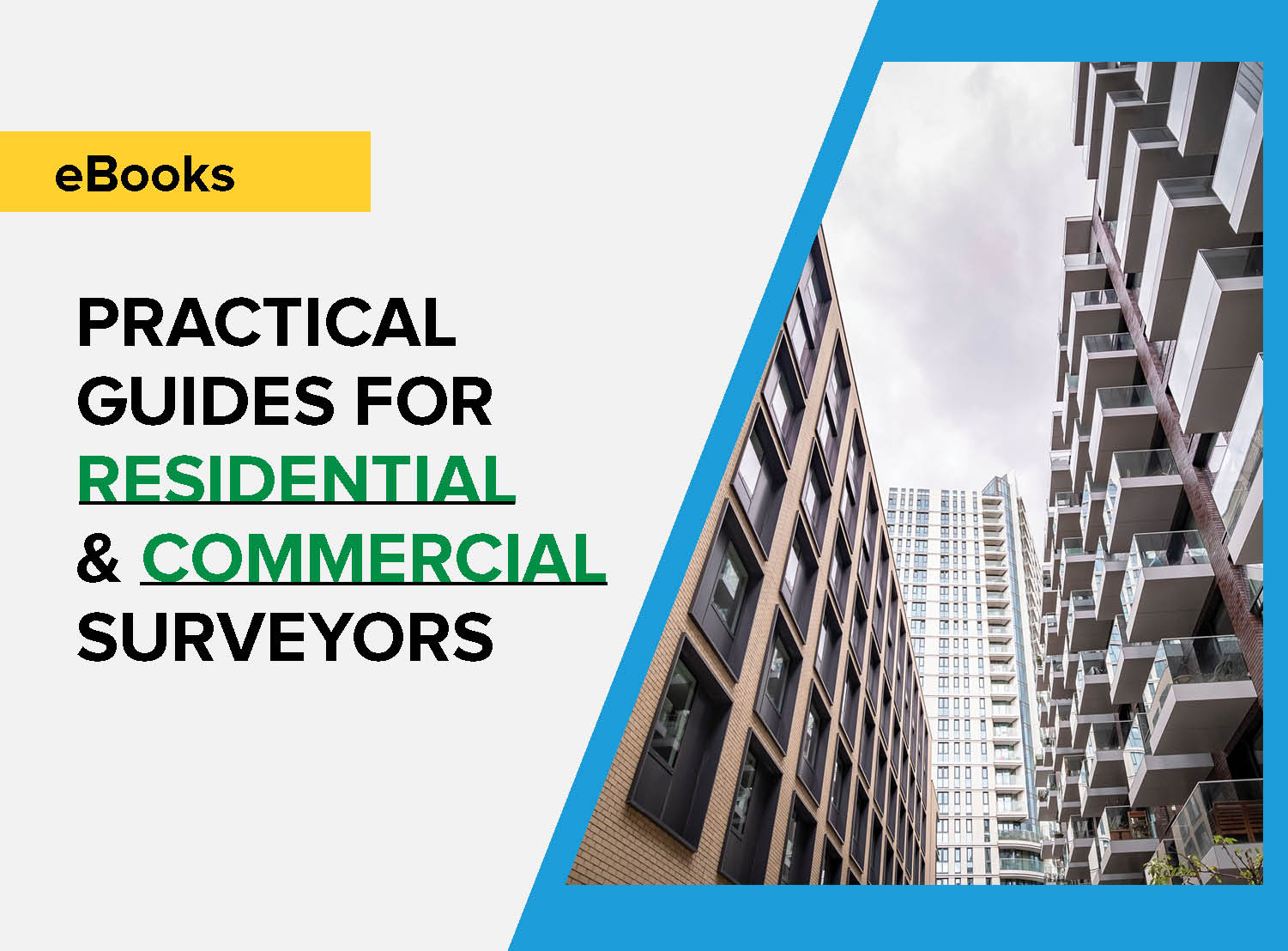The Complete Guide to Dilapidations for Surveyors

Dilapidations can be a complex and often contentious area for surveyors, landlords, and tenants alike. Navigating the legal and practical aspects of assessing and reporting property disrepair requires not only technical expertise but also clear communication and impartiality from all sides. This guide has been written specifically to provide surveyors with everything they need to approach dilapidations confidently, from understanding key terms to leveraging technology and best practices in reporting. With practical advice and a breakdown of landlord and tenant obligations, this guide ensures surveyors are well-equipped to handle even the most challenging dilapidation cases.
Contents:
- What Are Dilapidations?
- The Role of Dilapidation Surveys
- Best Practices for Reporting Dilapidations
- Using Technology When Reporting Dilapidations
- Landlord vs. Tenant: Who is Responsible?
What Are Dilapidations?
The term ‘dilapidations’ refers to deterioration or disrepair in a property brought on by a tenant’s noncompliance with the conditions of their lease. This includes damage from pets, neglect of maintenance, damage to flooring, and general disrepair beyond standard wear and tear. Being aware of what dilapidations are is an essential part of the end of lease process for landlords, tenants, and surveyors themselves, ensuring that disputes can be resolved fairly for all parties.
Many people think of old, abandoned, or partially destroyed buildings when the term dilapidations is mentioned, but it covers a variety of damages and building types. Usually, the exact conditions and expectations of property maintenance will be outlined in a tenant’s contract, as well as financial liabilities and any legal implications.
The Role of Dilapidation Surveys
Dilapidation surveys play a vital part in the rental process, offering an unbiased assessment for landlords and tenants at the end of a lease. It ensures the responsibilities of both parties are met, checking for any breaches of the agreement and estimating any costs related to damages. A good survey will identify damages caused by the tenant, provide evidence, and advise on what repairs will need to be done to rectify these issues, as well as any associated costs. Professional surveyors are used to protect both the landlord and tenant, as they are unbiased and able to legitimise any claims for compensation.
Best Practices for Reporting Dilapidations
To ensure fairness, accuracy, and clarity when reporting dilapidations, best practices must be followed. Below are some tips to help ensure your surveys are effective, sensical, and legally sound.
Write a Methodology
For the sake of transparency and clarity, you should start the survey with a short methodology. Briefly explain the tools and technology used, such as digital reporting platforms and measuring devices, to establish credibility. Outline the survey procedure, detailing whether it was a full walk-through or focused inspection, and clarify the types of damage assessed, such as wear and tear or structural issues. This helps both parties understand the scope of the survey and ensures the report is clear, accurate, and well-defined.
Use Accessible Language
As with any documentation, it’s important that the language used is easy to understand and concise. Rather than writing in overly complex technical language, keep it in simple terms so that both the landlord and tenant can understand exactly what needs to be done rather than leaving room for confusion. This helps prevent delays and misunderstandings, ensuring reports are there to dispel confusion rather than cause it.
Include Evidence
Visual evidence legitimises claims, leaving smaller margins for misrepresentation and confusion. Ensure to include photographic evidence for each specific piece of damage listed in a dilapidation report, ensuring it is clearly labelled and referenced in further descriptions. It’s important that these surveys are unbiased and transparent; including unedited imagery or videos will help resolve any disputes quickly.
Provide Descriptions
As well as providing visual evidence, it’s important to write a detailed description of every issue. Make sure to mention the exact location of the damage, the type, the extent, and any potential risks it poses, as well as how it breaches the lease. Accurate and detailed descriptions can also help the landlord meet their obligations under Section 18(1) of the Landlord and Tenant Act 1927 by showing how the tenant’s breaches have affected the value of the property.
Be Impartial and Accurate
Before submitting the report, make sure all measurements, facts, and information are correct, double-checking against the lease so the responsibility is properly assigned. In dilapidation surveys, accuracy is essential because inconsistencies may cause disagreements or even legal issues later on down the line. Avoid subjective language or opinions, ensuring to stick to the facts and focus on providing a fair assessment of the property’s condition based on the official lease.
Include a Summary
At the start or end of the report, provide a brief summary of the key findings. This helps clients quickly understand the overall condition of the property. Just as with the methodology, it also ensures transparency and an understanding of the immediate actions that need to be taken.
Using Technology When Reporting Dilapidations
Digital tools like GoReport make it easier to collect and organise information during dilapidation surveys. The GoReport Schedule of Dilapidations captures key details such as photos, relevant lease clauses, and locations marked on a site plan using SmartPin technology. Colour coded remedial actions clearly show whether an item needs repair, redecoration, or reinstatement, with the option to include cost estimates. This creates straightforward action points for both landlords and tenants.
GoReport also simplifies reporting by allowing data to be exported into Excel or Word, making it easy to share and include in wider workflows. Pre-defined Smart Library Templates, like Interim and Terminal Schedules of Dilapidations, help document costs linked to tenancy breaches. For more specific needs, users can create custom templates with GoReport’s team.
The platform also offers a Scott Schedule output, which provides a starting point for further discussions between landlords and tenants. By using GoReport, surveyors can work more efficiently, create accurate reports, and improve communication throughout the process.
Landlord vs. Tenant: Who is Responsible?
A dilapidation survey should clearly place responsibility for any damages on either the landlord or tenant. Both will have a part to play in maintaining the property to a high standard but often have different responsibilities as outlined in the lease agreement. While it can vary depending on property type, we’ve listed who is typically accountable for what below:
Landlord Responsibilities
In short, landlords are usually responsible for any damage or disrepair that is out of the tenant’s control. This includes:
- Structural Repairs: Fixing major structural elements such as walls, roofs, and foundations.
- Damp and Mould: Resolving issues related to rising damp, leaks, or poor ventilation, as these are often linked to the property’s structural condition rather than tenant neglect.
- Utilities and Building Systems: Ensuring that essential services, such as heating, plumbing, and electrical systems, are functional and safe.
- External Areas: Repairs to shared external areas, such as roofs, gutters, and communal spaces.
Landlords must also comply with legal obligations, such as the Housing Health and Safety Rating System (HHSRS), which ensures the property is safe and habitable. Failure to address these issues could lead to disputes or even legal action.
Tenant Responsibilities
Tenants are typically required to maintain the property to the standard outlined in the lease agreement, often referred to as the ‘tenant covenants.’ This generally includes:
- Day-to-Day Maintenance: Keeping the property clean and free from damage caused by negligence or misuse.
- Internal Decoration: Repainting or redecorating walls, ceilings, and other internal features as specified in the lease.
- Repairing Damage: Fixing any damage caused during their tenancy, such as broken fixtures, scratched floors, or stained carpets.
- Returning the Property in Good Condition: Restoring the property to its original state at the end of the lease, including removing any tenant-installed alterations, unless otherwise agreed upon.
Tenants are not typically responsible for issues caused by fair wear and tear, which refers to natural deterioration over time due to normal use. For example, carpets wearing thin from regular foot traffic would not usually fall under a tenant’s repair obligations.
Grey Areas and Disputes
Some issues fall into grey areas and may require interpretation of the lease or expert advice:
- Damp and Mould: While landlords are responsible for structural damp issues, tenants could be held accountable for mould caused by poor ventilation (e.g., not opening windows or using extractor fans).
- Repairs vs. Replacements: If a fixture is damaged but functional, disputes may arise about whether the tenant needs to repair it or the landlord should replace it.
- End-of-Lease Alterations: If a tenant makes unauthorised changes to the property, they may need to restore it to its original condition unless agreed otherwise.
Tenants and landlords can reduce conflict by outlining duties in detail and maintaining the property in good condition during the lease period.
By following best practices and leveraging modern tools, you can deliver clear, accurate, and actionable dilapidation reports that benefit both landlords and tenants. Looking to simplify your process? Explore how GoReport can help you create professional, detailed, and reliable reports with ease. Contact us today to learn more or book a free demo to see the platform in action.





